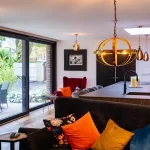Nuala House, Irish Residential Building Project, Photo, New Property Ireland
Nuala House Ireland : Irish Residence
Irish Country Property Development design by Jane D Burnside Architects in Ireland
19 Jun 2009
Nuala House
Date built: 2009
Design: Jane D Burnside Architects
Designing within the Planning Context:
Living in the landscape, Jane Burnside designs houses, not from the abstract position of the urban architect enjoying the opportunity to embrace the landscape, but from a position embedded within the landscape and all its contrasting qualities. The Nuala House is one of a series of houses she is working on that explores the vigour of this type.
Farming people have traditionally occupied the landscape in quite deliberate ways: some farmhouses shelter in the dips of otherwise harsh and exposed farmland; others occupy the highpoints to facilitate the surveillance of cattle – a wrapping wall providing a sheltered courtyard for the daily yard work. NI’s current planning legislation argues for only the former tradition – seeking thus to diminish the impact of the built form in the landscape to the point of invisibility.
Contemporary Irish residence design:

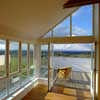
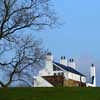
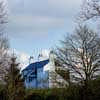
The Nuala House belongs to the latter tradition – that of landscape occupation. Of course this is not a farmhouse, this is a family home on a family farm and where once the drive was pragmatism and the setting a bonus, now the setting is the need and the bonus for the landscape should therefore be the architectural aesthetic. This house explores that new aesthetic.
The Nuala House lives on the thin line of its plan. One room thick, the movement through the house moves from side to side, end to end, experiencing internally as intensely as possible the contact with its immediate external dip, rise, promontory and beyond these proximate encounters, further out into its undulating nether lands.
The traditional farmhouse was organised tightly around a central stair with a room on either side. This new house typology does two things, firstly it stretches that centralised circulation lengthwise along the house edge, on the ground to one side and above the other and secondly it dissolves the individual room relationships on the journey from end to end. You walk the setting. Each day, like the hill farmer of old, you prowl the view.
The aesthetic of the pleasured experience of the setting had analogies in my thoughts of a female figure reclining on the hilltop. The cool damp of the ground underneath (the stone plinth), her back turned to feel the cool shadowed wind from the north (the white wall), her face embraced by the sun (the raised lounge and its terrace), her hands reaching to catch the hill-top breeze (the chimneys) while her child (the dining conservatory) plays freely in the safety of her proximity. The house experienced as a representation of the body – a sculpture of balanced contrasts: the linearity of the reclining form; the diagonals of roof and stair; the rise of the chimneys; the rolling setting.
This brings us back to where we began and the question of how we occupy our landscape. We are in the fortunate position that our countryside is proximate to the urban centres. We therefore have the best of both worlds: intensely used cities and towns, and some areas of occupied landscape. Rather than the question being about visual limitation, the question should really be about how we do so.
The aesthetic body of the Nuala House is by virtue of its position not a private affair. It shares a public prominence. The language of its making is not uncommon – slate roof, white rendered walls and chimneys, stone walls and painted joinery.
The hill it sits on like most hill farm settings is unremarkable probably even unnoticed by anyone until the house made it a place. It doesn’t seek detachment from its cultural context. Rather it seeks to enjoy the community of which it is part, not doubt itself, show off would be too strong, perhaps better would be confidently enjoying the place it is in and its occupation of the land, no longer apologetic about the aesthetic of our need to live in the landscape.
Nuala House images / information from Jane D Burnside Architects
Location: Northern Ireland
Northern Ireland Houses
Northern Irish Property Designs
The Black Cottage, Ardglass, County Down, Northern Ireland
Design: 2020 Architecture
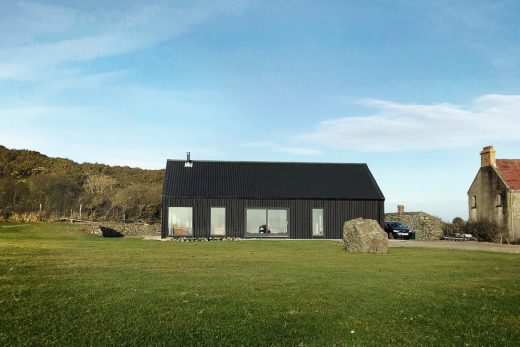
photography : Emma Stewart and 2020 Architecture
The Black Cottage in Ardglass, County Down
Cairn House in Carrickfergus, County Antrim, Northern Ireland
Design: 2020 Architecture
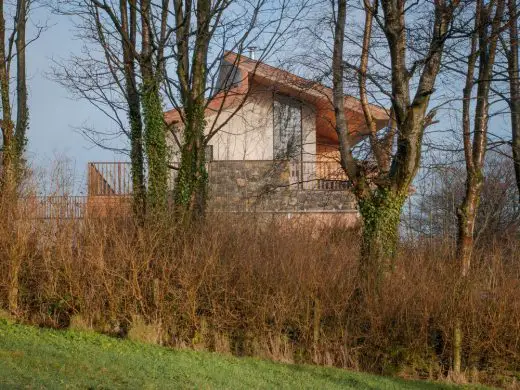
photography : Emma Stewart and 2020 Architecture
Cairn House in Carrickfergus, County Antrim
Irish Architecture Designs
Contemporary Architecture in Ireland
Irish Architectural Designs – chronological list
Irish Architect – design office listings
RIAI Awards 2009 : Shortlist
Irish Architecture – Selection
Origami House
Jane D Burnside Architects
Origami House
Fallahogey House
McGarry-Moon Architects
Fallahogey House
Ellenvale Extension, County Down
Catriona Duggan & Achim Gottstein Architects
County Down House
Comments / photos for the Nuala House Irish Architecture – new residence design by Jane D Burnside Architects page welcome

